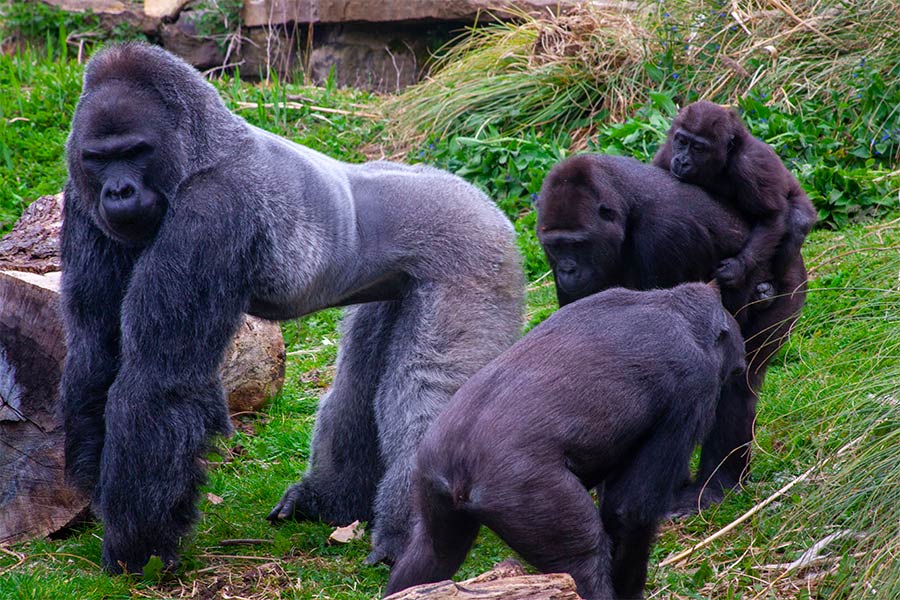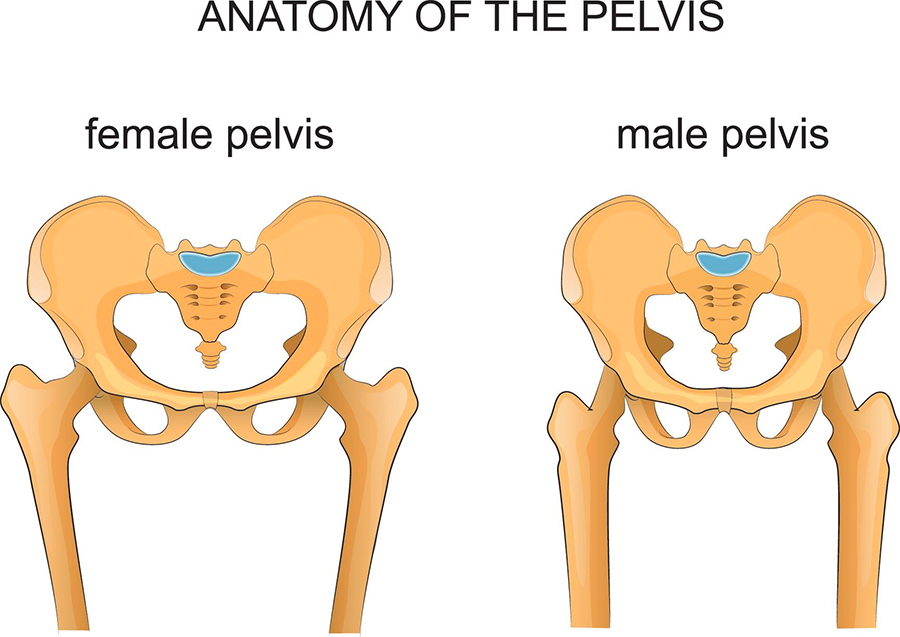- Sexual dimorphism is one source of variation within a species
- Understanding patterns in sexual dimorphism can teach us about social behaviors of other primates, including fossil hominins
Highlights
It’s no secret that animals of the same species don’t all look identical. There are many reasons for these differences in appearance, such as age, social status, or even regional variation. One of the most important sources of this variation actually comes from whether the individual is female or male. This variation, called sexual dimorphism, refers to any differences in size, shape, color, or even behavior that is caused by sex. But why is this so important for human origins?
Male and female differences
To answer that question, we first need to understand what causes sexual dimorphism. Not all species show size difference between female and male, and those that do aren’t identically different. The evolutionary pressures that produce sexual dimorphism vary, but among primates, the most common correlate to body size sexual dimorphism is group structure. Primate species can organize their social hierarchies in many different ways, usually contingent on mate access.

Large male gorilla with smaller females and juveniles.
Image credit Shutterstock
In some of these groups, the males’ access to females for breeding is regulated by their strength and social standing. Males can rise in social rank by winning contest bouts, meaning that there is strong selective pressure for males in these groups to be much larger than the females. These changes don’t just affect body size: males in groups with intense male-male competition also have thick, sharp canine teeth, used as weapons in combat bouts. These canines can be so different in size between males and females that the presence of the canine tooth alone can indicate whether the animal was a male or female in instances where records were not kept or the bones are found after decomposition.

Large male gorilla showing his teeth.
Image credit Shutterstock
This explains why a male gorilla is larger than a female, but the implications for human origins are more complex and rely on assumptions of group structure patterns that we see in living creatures today, which may also apply to the fossil record. Information that we have about the degree of sexual dimorphism and group structure of living species can be used to make inferences about fossil ones. In doing so, we can infer what changes in evolutionary pressures have occurred in hominin evolution.
As sharp as a tooth
The earliest known hominins have smaller canine teeth relative to the size of their other teeth than chimpanzees, our closest living relatives. Importantly, this canine size ratio continues to decrease through time, until hominin canines are rarely much taller than their neighboring teeth, and nowhere near as sharp as in other great apes. However, sexual dimorphism of body size did not change in lock step with the changes seen in the canine teeth. Hominin body sizes remained dimorphic throughout the majority of the timeline of human evolution, and there is still some dimorphism in modern human body sizes to this day.
Bipedal moms
There is one area which has increased in the degree of sexual dimorphism in our lineage through time: the pelvis. Female pelves must be larger in diameter than male pelves in order to accommodate childbirth. The difference in size can be seen in several key anatomical areas on the pelvis. Because of this, it is possible to estimate the sex of a human from their bones if the pelvis is present.

Image credit Shutterstock
The human pelvis is an incredible area of the skeleton due to the modifications needed for both bipedal locomotion and childbirth of our large brained and wide-shouldered babies.
While we are able to interpret patterns of sexual dimorphism in the fossil record using what we know about living species, there are still areas of further research left in the realm of sexual dimorphism. Recent work suggests that, for instance, the current human size sexual dimorphism may in fact be related to how estrogen affects skeletal growth and may not be mechanistically linked to male-male aggression in humans.
Written by Amy Peterson